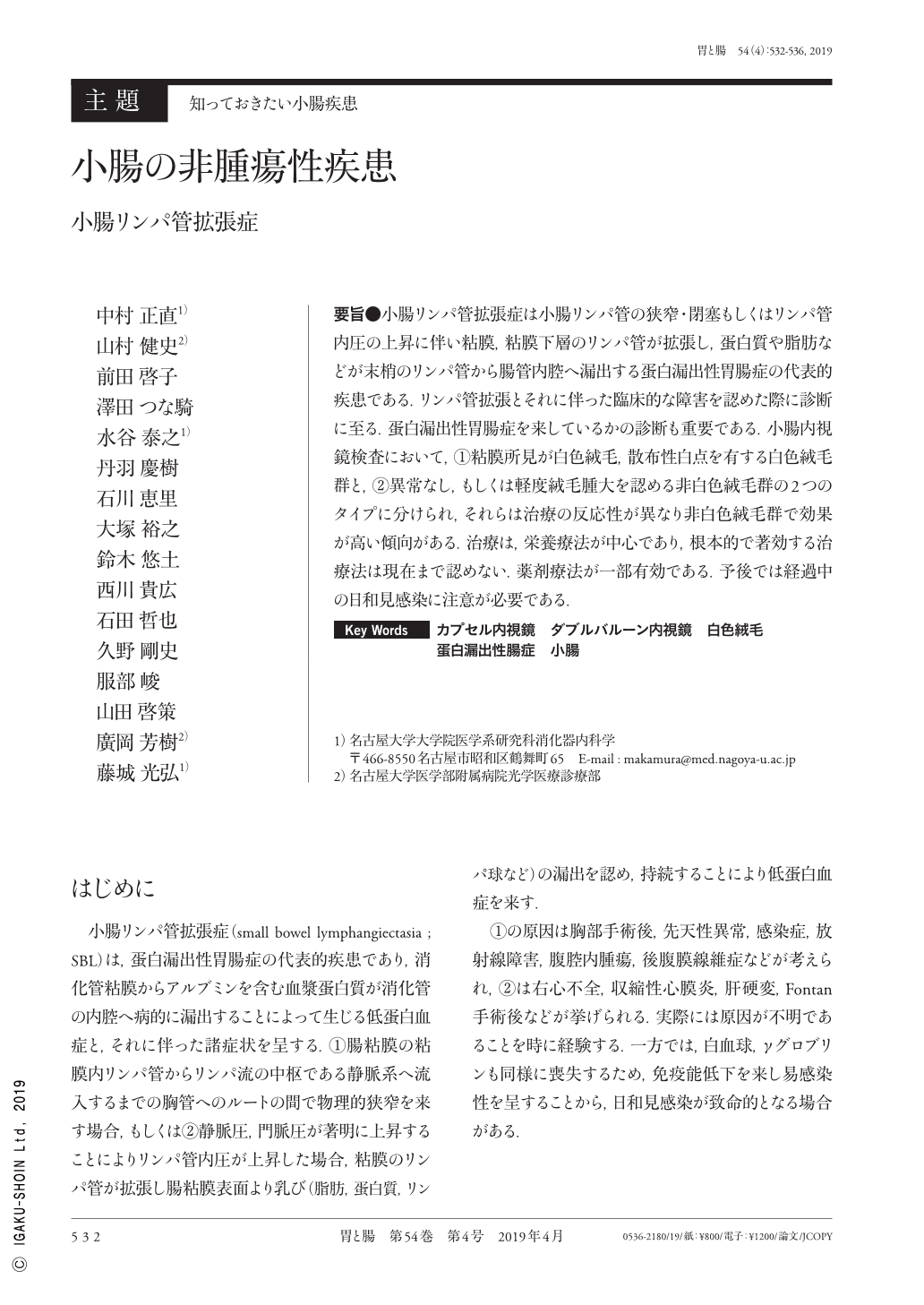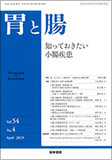Japanese
English
- 有料閲覧
- Abstract 文献概要
- 1ページ目 Look Inside
- 参考文献 Reference
- サイト内被引用 Cited by
要旨●小腸リンパ管拡張症は小腸リンパ管の狭窄・閉塞もしくはリンパ管内圧の上昇に伴い粘膜,粘膜下層のリンパ管が拡張し,蛋白質や脂肪などが末梢のリンパ管から腸管内腔へ漏出する蛋白漏出性胃腸症の代表的疾患である.リンパ管拡張とそれに伴った臨床的な障害を認めた際に診断に至る.蛋白漏出性胃腸症を来しているかの診断も重要である.小腸内視鏡検査において,①粘膜所見が白色絨毛,散布性白点を有する白色絨毛群と,②異常なし,もしくは軽度絨毛腫大を認める非白色絨毛群の2つのタイプに分けられ,それらは治療の反応性が異なり非白色絨毛群で効果が高い傾向がある.治療は,栄養療法が中心であり,根本的で著効する治療法は現在まで認めない.薬剤療法が一部有効である.予後では経過中の日和見感染に注意が必要である.
SBL(small bowel lymphangiectasia)is characterized by an enteric loss of plasma proteins in abnormal amounts and the primary etiology of protein-losing enteropathy. SBL can be definitely diagnosed when histopathological findings reveal dilated lymphatic vessels in the small bowel mucosa and submucosa. Mucosal findings of balloon-assisted endoscopy are classified into two categories:the white villi type and non-white villi type. The white villi type is defined as white plaques and white-tipped villi that are scattered in the small bowel(the so-called typical lymphangiectasia). The non-white villi type is apparently normal ; however, under more detailed observation, it can be observed as low and round villi with a normal color diffused in the small bowel. Therapeutic response in the non-white villi type is effective. SBL treatment includes diet therapy, medication, and surgical treatment, although no gold standard treatment is yet established. We should therefore be aware that opportunistic infections can occur in SBL patients with weakened immune system.

Copyright © 2019, Igaku-Shoin Ltd. All rights reserved.


